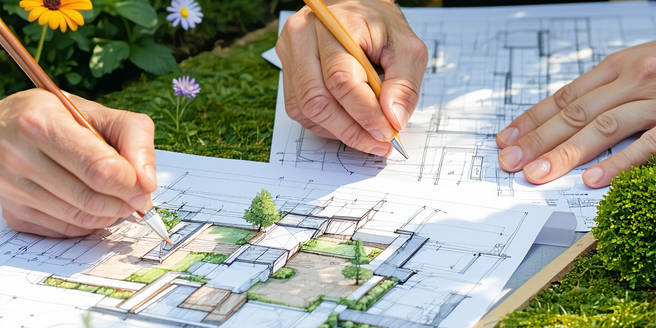Free Landscape Design Consultation Tips

Understanding Your Landscape Needs
Before diving into a landscape design consultation, it’s crucial to understand your landscape’s unique needs. Start by evaluating your yard’s current condition, its strengths, and areas that could use improvement. Consider how you intend to use the space—whether for outdoor entertainment, a play area for kids, or a relaxing garden retreat. Reflect on your personal style and how it might influence plant selection, hardscaping, and decorative elements. A thorough understanding of these factors can help you communicate your vision effectively to the designer. Take into account seasonal changes and maintenance preferences to ensure the space is functional year-round. Gather inspiration from magazines, websites, and nearby gardens to identify features you admire, and prepare to discuss these ideas with your designer for a personalized approach.
Preparing for the Consultation
Preparation is key to making the most out of your landscape design consultation. Begin by gathering relevant information such as property surveys, photos of the existing landscape, and any relevant property restrictions or regulations. Create a list of your outdoor priorities, including must-have features and potential challenges you foresee in your space. Consider drafting a preliminary budget to guide your discussions with the designer, keeping in mind that flexibility is sometimes necessary to achieve optimal results. Assemble a collection of images or clippings that resonate with your style preferences; these can serve as a visual guide during your meeting. Being well-prepared not only streamlines the consultation process but also empowers you to articulate your vision clearly, helping the designer tailor their suggestions to your specific goals and constraints.
Key Questions to Ask Your Designer
Asking the right questions during your consultation can significantly enhance the outcome of your landscape project. Inquire about the designer’s experience with similar projects, requesting examples or testimonials from previous clients. Discuss the timeline for project completion and any potential disruptions during the construction phase. Clarify the scope of work included in their services, such as plant selection, hardscaping, lighting, and irrigation. Ask about sustainable practices if environmental concerns are a priority, and how they plan to address drainage issues or soil quality. Understanding the designer’s process and how they incorporate client feedback is essential. Explore maintenance requirements for proposed designs and whether they offer maintenance services post-installation. These questions ensure you’re well-informed and aligned with the designer’s approach and expertise.
Maximizing the Consultation Outcome
To maximize the benefits of your landscape consultation, maintain open and honest communication with your designer throughout the process. Provide detailed feedback on initial design ideas and be open to suggestions that might enhance your vision. Trust in the designer’s expertise but also don’t shy away from voicing concerns or preferences. Schedule follow-up meetings if necessary to refine design details and ensure alignment on the overall project direction. Keeping a balance between your desires and practical considerations can lead to a more satisfying outcome. Stay informed about the latest landscape materials and trends that could complement your project. Lastly, ensure there is a clear action plan post-consultation with timelines, responsibilities, and expected outcomes to keep the project on track and within budget.
Follow-up Steps After the Consultation
After your consultation, it’s important to keep the momentum going by organizing follow-up actions. Begin by reviewing the notes and designs provided by your designer to ensure they reflect the discussion points and objectives. Engage with the designer regarding any revisions, ensuring that timelines and budget estimates align with your expectations. If necessary, schedule additional meetings to adjust and approve final plans. Confirm material selections early to avoid delays in procurement. Establish a clear timeline for project milestones and check-ins to track progress and address potential issues swiftly. Properly documenting every step can provide clarity and serves as a reference point. Finally, plan for a project debrief once the work is completed to discuss the overall experience and gather insights for future improvements or expansions.